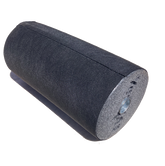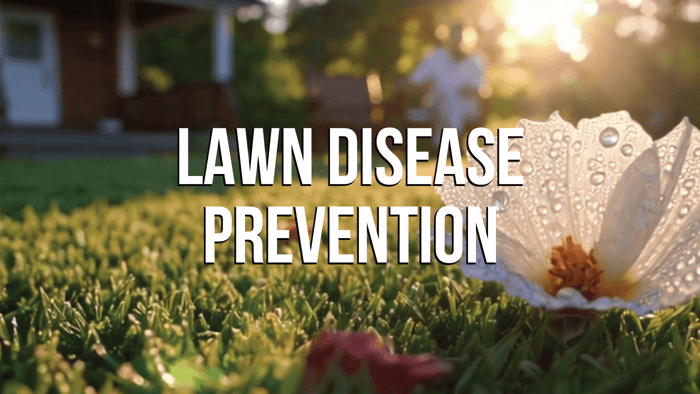Lawn Disease Prevention: How to Keep Your Grass Healthy and Fungus-Free Year-Round
A lush, green lawn is the pride of any homeowner, but it takes more than regular mowing to keep it looking its best. Lawn disease prevention is a crucial part of yard care that often goes overlooked—until unsightly brown patches or yellowing grass appear seemingly out of nowhere. Lawn fungus can strike when conditions are just right—or just wrong—from too much water to insufficient nutrients. Fortunately, you don’t need to be a turf expert to fight back. With a few simple steps and consistent attention, you can prevent lawn diseases like brown patch and dollar spot before they take hold.
Stop Them Before They Start
There’s a common saying in lawn care circles: “An ounce of prevention is worth a pound of cure.” And when it comes to lawn fungus, it couldn’t be truer. Fungal diseases are much easier to prevent than they are to get rid of. By focusing on overall lawn health, you naturally create an environment that discourages disease. Strong, thick turf is your first line of defense, and the best way to cultivate it is through thoughtful, routine care.
Feed Your Lawn Regularly
One of the simplest and most effective ways to prevent lawn disease is by ensuring your grass is well-fed. A healthy lawn has the energy and nutrients it needs to grow thick and resilient, making it much harder for fungal spores to find a foothold. Grass weakened by nutrient deficiencies is especially susceptible to disease.
For most climates, feeding your lawn four times a year is ideal—early spring, late spring, summer, and fall. Consider using a proven product like Scotts® Turf Builder® Lawn Food, which provides the essential nutrients grass needs throughout the growing season. Even better, sign up for a tailored solution like the Scotts® Grass Care Program, which delivers the right products to your door based on your grass type and location.
To make feeding even easier to manage, the My Lawn app helps you track timing, products, and results—making sure your lawn gets consistent care throughout the year.
Master the Art of Watering
Watering is where many well-meaning lawn lovers go wrong. Either the grass is overwatered, creating an ideal environment for fungus, or it’s underwatered and stressed, making it vulnerable. Proper watering not only hydrates your lawn but also helps it grow stronger, deeper roots.
Here’s the golden rule: Water deeply but infrequently. This means giving your lawn a good soak so that the water reaches the root zone but allowing the soil to dry out between sessions. The goal is to encourage the grass to develop deeper roots, which makes it more drought-resistant and less susceptible to disease.
The best time to water your lawn is early in the morning—ideally between 6 and 10 a.m. Watering in the evening or at night leaves grass blades wet for too long, increasing the risk of fungal infections like dollar spot and brown patch.
Mow Smart, Not Just Often
How and when you mow can greatly impact the health of your lawn. Cutting your grass too short—known as scalping—can stress the grass and leave it vulnerable to disease. Different grass types have different optimal mowing heights, but a general rule of thumb is to mow to about 3–4 inches for cool-season grasses. Warm-season grasses like zoysiagrass may prefer a slightly lower height, around 2–3 inches, while Bengal or Bermuda grass can thrive at even shorter lengths.
Never cut more than one-third of the grass blade in a single mowing session. This practice prevents shock and helps the grass maintain its photosynthesis process, which is essential for strong root development.
Be Proactive with Fungicide
Sometimes, even with the best lawn disease prevention practices, your lawn may still be at risk—especially if you’ve dealt with lawn fungus in the past. If your area is prone to high humidity, poor air circulation, or other fungus-friendly conditions, it may be worth incorporating a preventive fungicide treatment into your routine.
Products like Scotts® DiseaseEx™ Lawn Fungicide are designed to provide broad-spectrum control, working both as a treatment and a preventive measure. It’s particularly effective against common threats like brown patch, red thread, and dollar spot. Always follow the application instructions carefully for optimal results and safety.
Using fungicides should not replace basic lawn care practices but rather complement them. Think of it as a backup plan for when Mother Nature throws a curveball.
Aerate and Dethatch to Breathe Life into Your Lawn
One often-overlooked step in lawn disease prevention is aeration and dethatching. Over time, soil can become compacted and a layer of thatch—dead grass and debris—can build up, blocking air, water, and nutrients from reaching your grass’s roots. This creates a weak foundation for your lawn and makes it more vulnerable to disease.
Aerating your lawn (by removing small plugs of soil) helps loosen the ground, allowing your grassroots to breathe and grow deeper. Dethatching, on the other hand, removes thatch buildup and encourages healthier grass growth. Both steps promote a strong lawn ecosystem and make it less inviting to fungus.
Watch for Warning Signs
Even a well-maintained lawn can occasionally show signs of trouble. Early detection is key. Look out for symptoms like:
Discolored patches (yellow, brown, or gray)
Grass blades with spots or lesions
Slimy or moldy-looking growth
Thin or bare spots forming rapidly
If you notice these warning signs, act quickly. Adjust your care routine, reduce watering, and consider a fungicide treatment to nip the problem in the bud.
Reinforce with Strong Lawn Food
For added disease resistance, consider using a lawn food that supports both nutrition and protection. Scotts® Turf Builder® Healthy Plus Lawn Food is one such product that combines fertilization with preventative care. Not only does it promote strong, green growth, but it also boosts your lawn’s ability to ward off disease naturally.
This kind of dual-action product is especially helpful in spring and fall, when fungal outbreaks are most likely due to fluctuating weather conditions.
Turn to the Pros
Sometimes, lawn disease prevention and treatment are best handled with a little help from experts. If you’re struggling with persistent lawn fungus or want a customized plan, visit Sticker Burr Roller. Their knowledgeable team offers affordable and effective lawn care solutions, from sticker burr removal to disease management.
Whether you’re battling burrs, brown patches, or you just want the greenest yard on the block, they’ve got the tools and experience to help your lawn thrive.
Conclusion: A Healthier Lawn Starts with Consistency
Lawn disease prevention isn’t about complicated strategies—it’s about consistency, timing, and tuning in to what your grass needs most. By feeding, watering, mowing, and protecting your lawn regularly, you create a resilient, vibrant outdoor space that naturally resists fungus and disease.
With the right care—and maybe a little help from products and pros like Scotts® and Sticker Burr Roller—your lawn will stay green, strong, and beautiful all year long.









